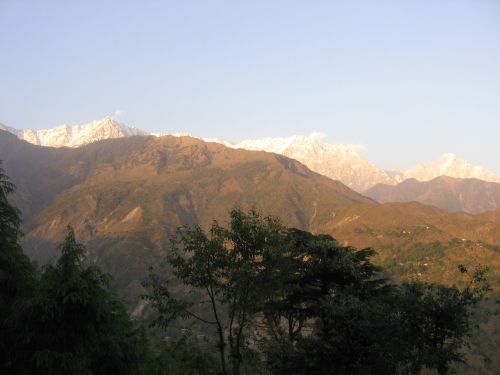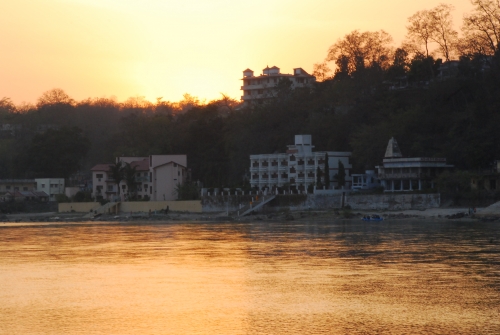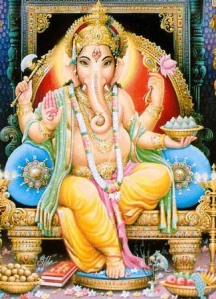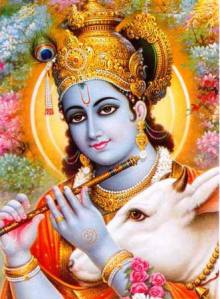Indian summer: Top 11 things to do
While the majority of foreign tourists travel to India in the winter, there are some who like it hot! India is a popular summer destination for European vacationers, monsoon lovers and travelers who like to swim against the stream. There are lots of good reasons for visiting India in the summer, including the profusion of summer festivals, breathtaking summer-only destinations in the Himalayas, un-crowded tourist attractions, cheaper airfares and slashed rates at many hotels and resorts. Here are 11 things you can only do in the summer in India:
1. Eat mangoes. Early summer, before the monsoon arrives, is the hottest time of year in India. The only relief comes in the form of a sweet and succulent fruit, welcomed and revered from one end of the country to the other. In India, the mango is the “king of fruit.” Mangoes begin to trickle into markets and restaurants in April and by June the streets are full of people savouring their “utterly overpowering lusciousness,” as one mango lover said. While there are many varieties, the Alphonso is hailed as the “king of kings,” and its seasonal appearance makes the news.
2. Hike in Ladakh. In winter, the Ladakh region of India’s remote northern state is a cold, lonely and forbidding mountain kingdom. But come summer, flowers bloom and the tourists return to admire the barren, lunar-like landscapes and traditional Indian, Tibetan and Central Asian cultures. Hikers flock to Leh, the region’s capital, for some of the best treks in India. Even those with less physically ambitious goals will enjoy hiking up to the palace and royal monastery, Namgyal Tsemo Gompa, in the centre of Leh, to watch the sunrise over the Himalayas. The season’s short, though, and by mid-September it’s all over for another year.
3. Chill at a hill station. During the reign of the British Raj, the colonial rulers retreated to hill stations to escape the incendiary heat of the plains. Shimla, in the modern state of Himachal Pradesh, was the “Queen of Hill Stations.” It was from this small mountain-top town that the British ruled fully one-fifth of humanity. Today, visitors to Shimla enjoy the laid-back holiday vibe, Raj-era buildings – including the baronial Viceregal Lodge – and spectacular views of the Himalayas from the The Mall, a ridge-top pedestrian-only thoroughfare that was once off-limits to Indians. Don’t miss high tea at the elegant, century-old Oberoi Cecil Hotel. Shimla is a taste of “ye olde England” in the Himalayas.
4. Sing in the rain. Monsoon is a very special time of year in India. The summer rains bring welcome relief from the scorching heat of early summer and they are a symbol of fertility, vigour and joyful abandon. Bollywood movie watchers know that when rain showers soak the hero and heroine, it’s shorthand for the lovemaking they can’t show on screen. The southwest monsoon is expected to arrive in the southern state of Kerala each year on June 1, and it spends the next few months sweeping north across the subcontinent, lightening the hearts of farmers, children, lovers and just about everyone else. Tourists, too, enjoy the lush freshness, cooling downpours and relaxation-inducing vibes the monsoon brings.
5. Experience bliss. Summer monsoon season is the best time for Ayurvedic treatment in India. Ayurveda, which means “science of life,” is the ancient system of traditional Indian health care that seeks to restore health through the use of diet, herbs, lifestyle advice, cleansing techniques and, primarily, bliss-inducing oil massages. The languid dampness opens the pores and makes the body more receptive to the medicated oils. Kerala, in southern India, is a tropical paradise on the Arabian Sea, and the best place for Ayurvedic treatment in India. Ayurvedic resorts, from the rustic to the luxurious, line the shores between white sand beaches and palm tree forests and offer a relaxing vacation as well as authentic treatments.
6. Find the source of the Ganges. The Ganges River – known in India as Ganga Mata – is the lifeline of the country and its most sacred river. One-in-ten people on earth depend on its bounty for their livelihood. It cascades out of the high Himalayas in northern India, and finding its source – or sources – is a major pilgrimage activity every summer after the snows melt and the roads and villages become accessible (April to November). The pilgrimage is called Char Dham, which means four sacred places, and bus tours from Rishikesh in Uttaranchal state can take you to all four: Badrinath, Kedarnath, Yamunotri and Gangotri.
7. Get soaked with Ganesh. One of the biggest festivals in Maharashtra state takes place at the end of summer. It’s called Ganesh Chaturthi, and while it’s celebrated throughout India, no one does it quite like Mumbai. For 10 days, Mumbaikers celebrate by holding cultural and social programs, eating sweets and worshipping the popular elephant-headed god. On the 11th day, his birthday, an enormous clay figure of Ganesh is paraded through the streets of Mumbai before being immersed in the Arabian Sea. The main parade, to Chowpatty Beach, is accompanied by thousands of celebrants dancing and singing in the streets. All are welcome to join the fun.
8. Sip tea in Darjeeling. A popular hill station perched high up in the Himalayas, on the northern edge of West Bengal, Darjeeling also gives its name to the world’s best tea. In the 19th century, Darjeeling was THE summer destination for the British in Calcutta (then the capital of colonial India). Though Darjeeling is lashed by the summer monsoon, it still offers an escape from the heat of lower-lying regions. Tourists enjoy the Victorian-era holiday atmosphere, spectacular views of some of the world’s highest mountains, tours to surrounding tea gardens and Tibetan culture. Take the poignantly slow Toy Train from Siliguri and you will find yourself in tune with Darjeeling’s timeless appeal.
9. Run with the chariots. The mid-summer Chariot Festival in Puri, Orissa, attracts millions of devotees and tourists each year, who take part in an enormous procession as three mammoth, dazzling wood chariots are pulled through the streets. It’s one of the biggest festivals in India – so big, it inspired a word that means “massive, inexorable force.” The word juggernaut was coined after 19th century British spectators saw people, mad with devotion, throw themselves under the giant wheels of the Lord Jagannath’s chariot. The splendour and grandeur of this spectacle is unforgettable.
10. Watch snake boats compete. The Onam Festival of late August celebrates the tropical southern state’s rich cultural heritage during a glorious time of year when everything seems fresh and radiant. During the 10-day festival, Kerala puts on a showy display of games and sports, traditional art forms, drama and classical music. There’s also shopping at the many festival bazaars that spring up and a Grand Feast. But the highlight is the Nehru Trophy Snake Boar Race, the biggest snake boat race in the world. This immensely popular festival, held to coincide with Kerala Tourist Week, attracts people from all over the globe.
11. Celebrate Krishna’s birthday. Blue-skinned Krishna is one of Hinduism’s most important and beloved gods. He can be depicted as a cherubic baby, flute-playing lad, devoted lover – alongside his consort Radha – or as Arjun’s charioteer during the epic battle of the Mahabharata (the basis of the Hindu bible, the Bhagvad Gita). Inspiring fervent devotion among his followers, his mid-summer birthday (this year on August 14) is called Janmashtami. It is celebrated all across the country, but nowhere more so than in his birthplace, Mathura, Uttar Pradesh. The fun includes rituals, feasting, devotional singing, plays that depicts scenes from his action-packed life and human pyramids – formed to reach a high-hanging pot of butter, Krishna’s weakness.
[NOTE: Originally published on The Matador Network, August 2009.]
If you enjoyed this post, you can….
Get updates and read additional stories on the Breathedreamgo Facebook page.
Buy Song of India, a collection of 10 feature stories about my travels in India. E-book version is now only $1.99.
Subscribe to the free — and inspiring! — e-newsletter, Travel That Changes You.







